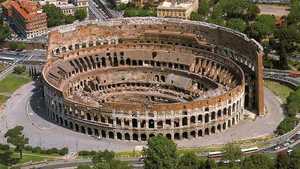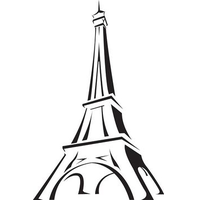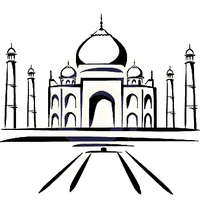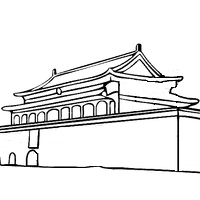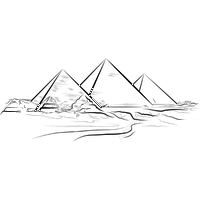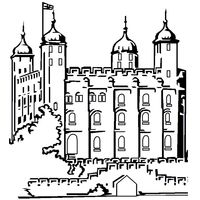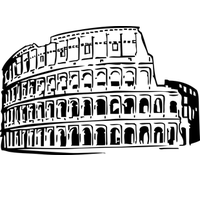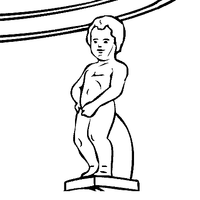Rome, capital of the Roman Empire, was a very special megalopolis until the beginning of the second century. Dirty, muddy, noisy, it was also a real maze of narrow streets crowded at all hours of the day and night. It is during the second century that the city will be adorned with a large number of monuments, ventilating it greatly. The construction of the Colosseum, which followed the destruction of the Domus Aura, was one of the starting points of the urban planning of ancient Rome.
Rome before the construction of the Colosseum
By the middle of the first century the configuration of Rome was not so different from that which it had at the time of its construction. It was initially centered around a vast military plaza, the famous Champs-de-Mars, and its streets were narrow, winding, with no particular organizations. The life on the spot was difficult because of the noise and the perpetual movement of the population and the goods that were conveyed there. Quite quickly the Champs-de-Mars was urbanized, military operations being moved outside the walls. A large city center was built to match the power of the Roman Empire. Then the emperors Julian and Claudian razed some buildings to build memorials to the glory of the battles won by generals, which will air the city, but not enough.
In the middle of the first century the city was rather unpleasant, poorly organized, impractical. Then came the reign of Nero, who was the first to review the conception of Rome. At that time, Rome was divided into 14 geographical areas.
Middle of the first century: The first transformations
In 54 AD Nero took power over the Roman Empire. This leader is known today for having a chaotic reign during which he caused many abuses. He remains in history as a particularly hard dictator. During his reign a fire broke out in the city, in 64. It was not the first time that it happened, it was even quite frequent. It must be said that the buildings were made of stone and wood, the interior layout used a lot of fabric and fabrics. All this fuel caught fire quickly when the oil lamps were used in the evening. Most of the time the fires were controlled in time, but sometimes not, and in this case it was a good part of the city that disappeared. In fact, the Colosseum has suffered several fires throughout its history.
Taking advantage of the destruction of much of the city (10 of the 14 areas), Nero decided that the historic center will now be his private property and had a large area shaved to build a monumental palace, the "Domus Aurea". This was the area from the Palatine to the Esquiline. This residence consisted of a palace, a large park, a triumphal arch, and a water feature, plus of course several annexes. The Domus Aurea was part of a thoughtful urban plan that challenged the unthinking thought of the city.
This new city was conceived around geographically well-thought-out regions. They had wide streets serving smaller streets, which made the commercial traffic and the circulation of the population more fluid. The new buildings had courtyards and a maximum height of 25m. These new rules allowed the city to be better designed, but it remained an overpopulated city and dangerously at the mercy of the flames.
End of the 1st century: Vespasian landscaping
When Vespasian took power over the Roman Empire he decided to destroy the legacy of Nero, considered a fierce dictator. Architecture was going to help him.
Vespasian decided to destroy the Domus Aurea, symbol of the dictatorship, and replace it with a theater worthy of the capital of the Empire. It was a purely political decision because the theater was a popular hotspot, a place where people met almost daily for entertainment. By this replacement, he offered to the population what had been taken by his predecessor: the center of Rome. Thus was built the Colosseum, whose story is described here.
The sons of Vespasian, who took the reins of the Empire one after the other, continued the renovation of Rome, but without much ambition, there was no great modification of its town planning under their reigns. Titus granted the construction of baths in the neighborhoods of Quirinal and Subure, two densely populated areas. It was a gesture, one more, for the people.
2nd century: The great transformations
From the end of the first century Rome suffered a succession of fires that ravaged some neighborhoods. The Colosseum was hit several times and it was necessary to do very expensive work to, each time, restore it. But Rome is not the Colosseum, and many emblematic monuments were destroyed at that time. In 80, the Champs-de-Mars is destroyed, as well as the amphitheater of Statilius Taurus and the baths of Nero and Agrippa. In 86 it is the pantheon of Agrippa which was the prey of the flames, it disappeared definitively that year. The fires continued at regular intervals until the fall of the Roman Empire in the fifth century, proof that the problem was never solved. However each time they allowed the redevelopment of part of the city, something that was not done during the pre-Nero years.
Under the Flavians, the Ulpii and Antonines were built:
- The Colosseum, popular place if it is,
- The forum of Trajan, in the heart of the city,
- The road linking the forums to the Champs-de-Mars,
- Many public buildings,
- Memorials.
The work generated many problems. Aside from the noise, the routing of materials saturated the roads leading to the building sites, which caused traffic problems. The construction sites were also dangers for passers-by, besides the fact that the short duration of the works of a building, if it made it possible to limit the impact of these works over time, forced the local inhabitants to organize themselves quickly for do not undergo this work. This was the case, in particular, traders. In addition, some sites required extensive leveling of the ground. Thus the construction of the forum of Trajan forced the builders to erase a complete hill, hill which served to fill the water of the Domus Aurea of Nero, then to raise the ground to a level acceptable for the construction of the Colosseum.
Source of funds
If the second century was that of architecture, in Rome, it is necessary to ask the question of the origin of funds that allowed to cover the city of monuments and other public buildings. In fact it's pretty simple, it's simply money from the spoils of war. If this period was calm enough, militarily speaking, it is also because a large number of conquests had already been made previously. The subject peoples had to pay tribute to the Roman Empire, most of the money going to the maintenance of the 30 Roman legions that ensured the peace and protection of the borders. Only a very small part of this money went into the administration of the Empire, and on this part, a not insignificant part was dedicated to the construction in Rome. Really not negligible, since on the 75 million sesterces to administer the Empire, between 20 and 60 were used for these constructions. It's enormous !
The situation of Rome at the end of the second century
Towards the end of the second century Rome was a city already very old, but with practical design. It was divided into different geographical areas to the homogeneous population. The Aventine district was one of the most aristocratic. The popular houses were gradually razed, replaced by more upscale mansions. There was Hadrian's and Trajan's, before they were transferred to the Palatine. The Quirinal district was, conversely, popular. The animals were numerous, losing themselves in a maze of winding streets. The neighborhood of Subure was known to be that of the prostitutes, it was rather dangerous.
When we were a little money person in Rome we lived in these popular neighborhoods. Life was not pleasant, contrary to what one might think. The noise was permanent: At night, the bakers prevented the inhabitants from sleeping, the morning it was the deliveries, the day of the day activities. The streets were dirty - the sewage system did not exist in Rome at that time - and often muddy, the fault of faults palets, unpaved courtyards and multiple animals that brought dirt and dirt to the inside the city. Juvenal, the Roman poet at the origin of the well-known phrase Panem and Circenses ("Bread and Games"), writes:
What miserable solitude seems to you preferable to the thousand dangers of this savage city?
It must be said that Juvenal was not soft with the power in place.
Conclusion
The Western reader of works on Rome may have the impression, in the stories that are made, that the city was an architectural splendor where life was particularly pleasant. In fact it is not so. The city was indeed covered with monuments, but to live on a daily basis it was not very different from other ancient cities: Dirty, noisy, narrow. Living conditions were difficult, with the exception of those who could afford to live in good neighborhoods.




